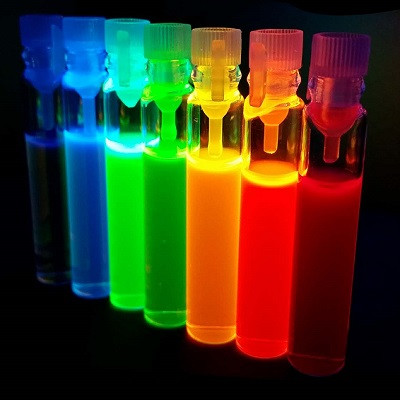
2020-01-14
Visited : 4950
The researchers of Samsung Advanced Institute of Technology recently succeeded in developing quantum dots that were 21.4 percent more efficient with a million hours increased lifetime without having to use heavy metals. Samsung is planning to soon integrate this cutting-edge quantum dot technology into its self-emissive display technology.
A duo of researchers and fellows at Samsung Electronics have, in an industry-first, proved the potential of Quantum dot light-emitting diodes (QLEDs) for commercial purposes in a new study. On November 27 (London), this study on the commercialization of QLEDs was published by Nature, the world’s leading multidisciplinary science journal.
Quantum dots are nanoscale semiconducting crystals that have unique optical and electronic properties due to quirks of quantum mechanics. Since their development in the 1980s, scientists have been finding many uses for them in optical devices. Unfortunately, as Efros notes, they suffer from two problems that have prevented them from being fully utilized. The first is that they are based on cadmium, a toxic heavy metal. The second is the QD phosphors that are used in display devices—they are not self- emissive, which means they need to be replaced by QD light-emitting diodes in order for them to be competitively efficient. Notably current Samsung QLED TV screens do not use the QLEDs as a source of light—instead, LCDs produce backlight which is then absorbed by a film of quantum dots. In this new effort, the group at Samsung has made progress towards addressing both problems. Their development comes just a month after the company announced that it was planning on investing $11 billion in the technology over the next five years.
The authors of this groundbreaking project are Dr. Eunjoo Jang, Samsung Fellow, and Dr. Yu-Ho Won, a Principal Researcher at the Samsung Advanced Institute of Technology. By improving the structure of Quantum Dots, the team managed to hugely improve quantum efficiency, as well as extend the lifetime of the QLED element. The team found, at the conclusion of their study, that their method had improved quantum efficiency by 21.4% and increased the QLED lifetime to a million hours.
“Thanks to Samsung’s distinctive core material technology, we were able to work towards exploring the potentials of next-generation displays,” noted Dr. Jang. “Going forward, we are looking to expand the range of development of ecofriendly displays by adopting Quantum Dots in new structures.”
“This study has enabled the production of Quantum Dots with high efficiency regardless of shell thickness by providing a better understanding of the mechanism that produces Quantum Dots,” added Dr. Won.
In 2015, Samsung launched its Cadmium-free (Cd-free) Quantum Dot TV and continues to lead the development of next generation eco-friendly displays, having obtained over 170 patents on element structure to this end.
Read the original article on Samsung Global Newsroom.